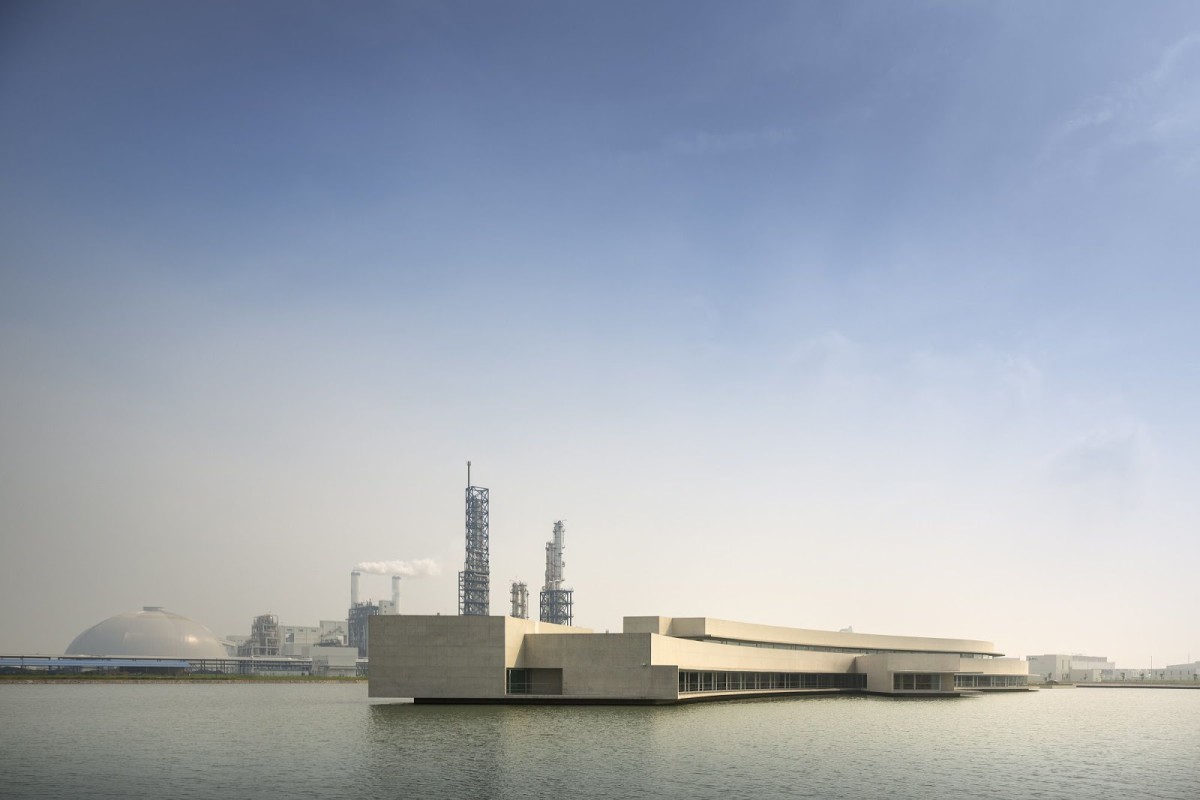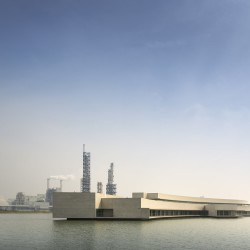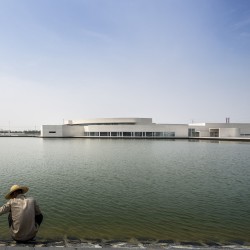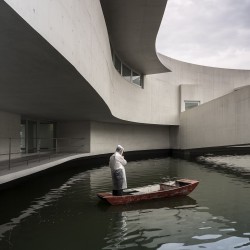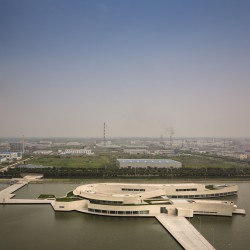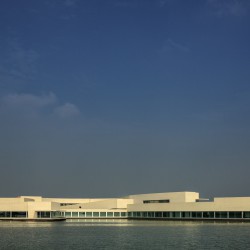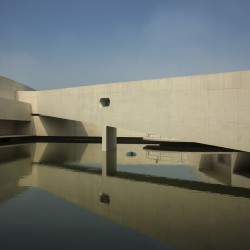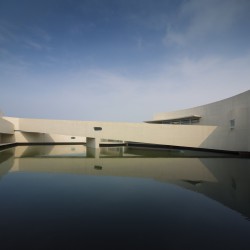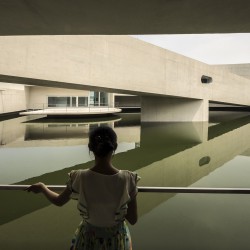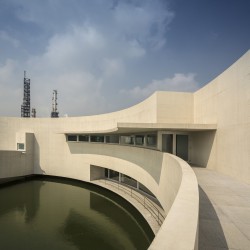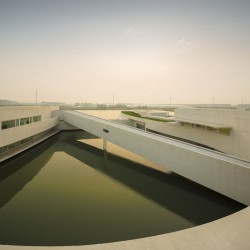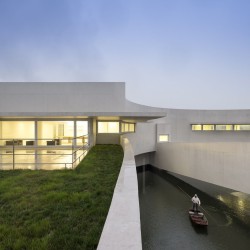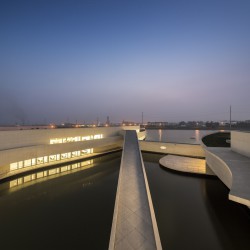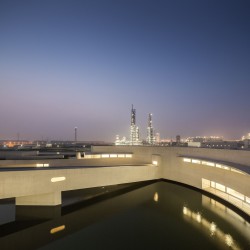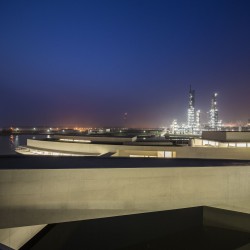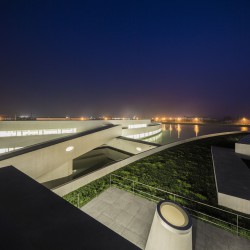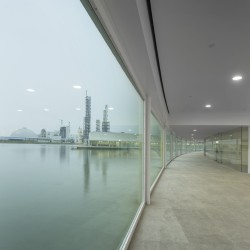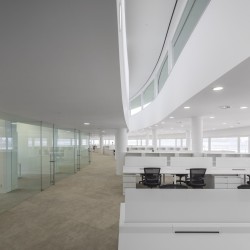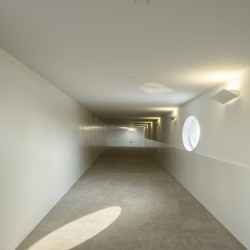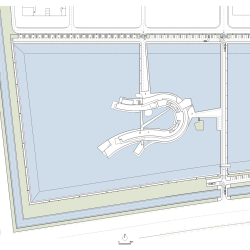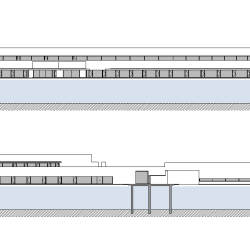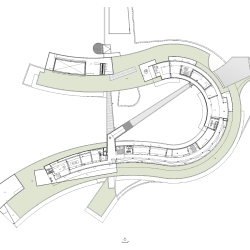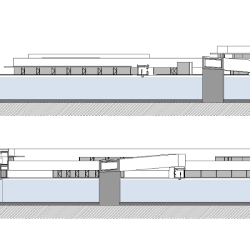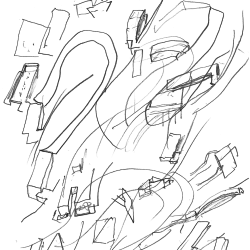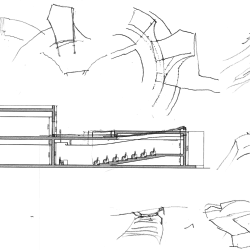Álvaro Siza with Carlos Castanheira . photos: © FG+SG fotografia de arquitectura
Tempos houve em que os grandes artistas dominavam várias artes, não diferenciavam nem especializavam as belas-artes.
A ESCULTURA E O ARQUITETO.
Interessavam-se por todas. Trabalhavam em todas.
Refiro-me em especial às artes do espaço. O controlo do espaço, o modo de uso, a sua percepção, o sentir, o estar.
A arquitetura tem que ser escultura, como a escultura é arquitetura no sentido em que transforma os espaços. Pode melhorar o espaço urbano, torná-lo mais belo, mais perceptível. Dando-lhe escala. Por vezes grandeza. Ou simplesmente beleza.
Que a escultura é coisa independente ou que a arquitetura é algo puramente técnico é erro dos tempos que vivemos, absorvidos pela velocidade e especialização.
Há algo de renascentista em Álvaro Siza, na sua vontade de fazer escultura, de desenhar ou de escrever. Essa vontade de explorar a beleza revela-se como um complemento essencial da sua atividade de ordenar o espaço, a luz, de dar forma ao espaço temporal.
Ao aproximarmo-nos do edifício de escritório principal da fábrica Shihlien, três figuras esperam-nos sob o peso do volume que marca a entrada, com as suas formas curvilíneas que fogem em várias direções.
Recebem-nos. Saúdam-nos. Como um tributo a quem chega. E a quem parte.
Controlam quem se aproxima, dominando o espaço, criando hierarquias, sombras, reflexos, dimensão e, sobretudo, arquitetura.
No interior, outra escultura marca um facto especial: a “Amizade” entre quem contribuiu e tornou possível a realização de todos aqueles espaços e atividades. Está simbolicamente imortalizada em duas peças de mármore que se entrelaçam, num gesto de elegância, de abraço, mas também respeito. Mútuo.
Agora que a escultura está na arquitetura, é possível confirmar que sempre lá esteve. Isso vê-se analisando os esquissos, os desenhos, as maquetas, os pormenores, os materiais.
Não deverá o arquiteto ser também escultor?
Como quando não havia especializações?
El Soto, 29 de Julho de 2014.
Carlos Castanheira
Client: Por-Shih Lin, Chairman, Shihlien Chemical Industrial Jiangsu Co.
Location: Huai’an City, Jiangsu , China
Project: 2010 – 2014
Construction: 2011 – 2014
Total Building Area 14.000 m2
Project Team
Architects: Álvaro Siza with Carlos Castanheira
Portugal’s Office: CC&CB – Arquitectos Lda.
Principals in charge: 1st phase (preliminary project) – Pedro Carvalho, Luís Reis
2st phase (execution project) – Luís Reis
Collaborators: Diana Vasconcelos, Susana Oliveira, Elisabete Queirós,
Orlando Sousa, Rita Ferreira, João Figueiredo,
Caitriona, Anand Sonecha.
3d models/renders: Francesco Sechi, João Figueiredo, Pedro Afonso, José Soares.
Creative Integration Consultant: Xue Xue Institute, Xue Xue Foundation
Project management & construction supervision: Stephen Wang & Richard Wang with Chiou-Hui Lin
Local Permit Architects and Engineers: United Architects & Engineers Co., Ltd
Engineering: Shanghai Qingya Mechanical and Electrical Engineering Co. (HVAC, electrical, plumbing, telecommunications and security installation)
RFR Shanghai (Stuctural review)
Geberit China (Water drainage)
Construction company: Zhejiang Urban Construction Group
Consultants: HDP – Paulo Fidalgo (Structure)
GET – Raul Bessa (Mechanical)
GPIC – Alexandre Martins (Lighting)
Photography: Fernando Guerra I FG+SG I ultimasreportagens.com
SCULPTURE AND THE ARCHITECT
At one time the great artists were masters of many arts and did not differentiate between the fine arts nor specialize in any one in particular.
They were interested in all the arts. They worked in them all.
I am thinking in particular about those forms of art that relate to space. The control of space, the way it is used, how it is perceived, how it is felt, how it is.
Architecture must be sculpture, just as sculpture is architecture, in the sense that it transforms space. It can enhance urban space, making it more beautiful, more perceptible. Giving it scale. Sometimes grandeur. Sometimes beauty.
The idea that sculpture is something independent or that architecture is purely something technical is an error of the times we live in, obsessed as we are by speed and specialization.
There is something of the Renaissance Man in Álvaro Siza, in his wish to create sculpture, to draw and to write. This will to explore beauty is revealed as an essential complement to his controlling of space and giving of form to temporal space.
Approaching the main office building of the Shihlien factory, below the mass of the volume that marks the entrance, three figures await us with their curvilinear forms running in various directions.
They receive us. They greet us. Like a tribute to someone arriving. Or leaving.
They control anyone who approaches, dominating the space, creating hierarchies, shadows, reflections, dimension and overall, architecture.
Inside, another sculpture marks a special thing: the “Friendship” between the people who contributed to make the realization of all those spaces and activities possible. Friendship is symbolically immortalized in two pieces of marble wound together in an elegant gesture, in an embrace, but also in a gesture of respect. Mutual.
Now that the sculpture is there in the architecture, we can see that it was always there. This can be found by analysing the sketches, the drawings, the models, the details, the materials.
Should the architect not also be a sculptor?
As it used to be when there was no specialization?
El Soto, 29th of July of 2014.
Carlos Castanheira

